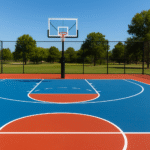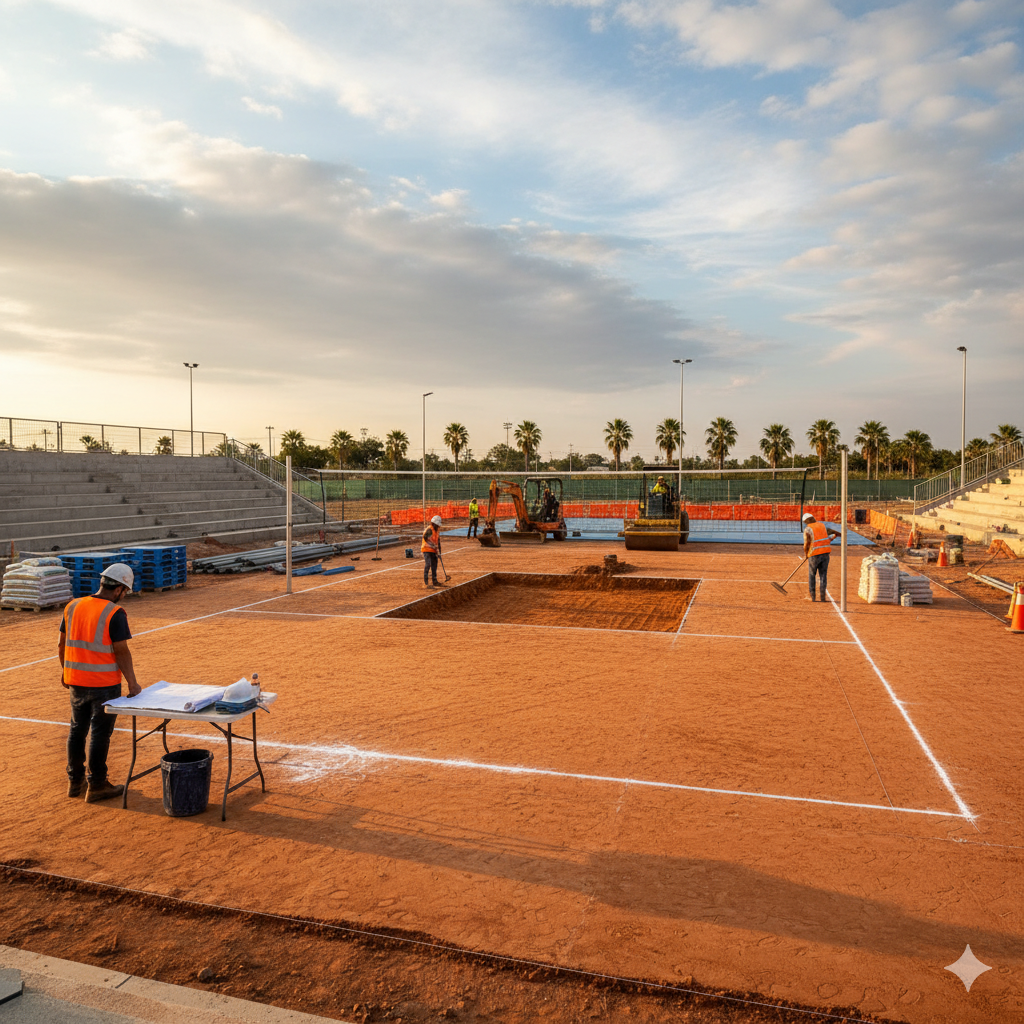Introduction
Volleyball is one of the most popular team sports in India, enjoyed in schools, colleges, residential societies, clubs, and professional arenas. From the beaches of Goa to indoor stadiums in major cities, the demand for volleyball court construction in India has grown significantly.
A well-constructed volleyball court not only ensures safety and comfort but also meets the performance standards required for training, competitions, and recreational play. Building a volleyball court requires expertise in surface preparation, flooring materials, dimensions, and accessories to ensure compliance with international standards.
This article covers everything you need to know about volleyball court construction in India—types, dimensions, flooring options, cost, and maintenance.
Why Build a Volleyball Court in India?
-
Growing Popularity: Volleyball is widely played at schools, colleges, and clubs across India.
-
Fitness & Teamwork: Encourages agility, coordination, and team spirit.
-
Multi-Utility Spaces: Volleyball courts can double up for other sports like badminton or futsal with proper markings.
-
Tournaments & Training: Proper courts are essential for professional coaching and hosting local or state-level competitions.
Types of Volleyball Courts
1. Indoor Volleyball Courts
-
Preferred for professional and competitive matches.
-
Flooring options: wooden, PVC vinyl, or synthetic polyurethane.
-
Offers consistent bounce, shock absorption, and durability.
-
Requires good lighting, ventilation, and controlled environment.
2. Outdoor Volleyball Courts
-
Commonly seen in schools, residential societies, and open grounds.
-
Surfaces can be concrete, acrylic, synthetic turf, or sand.
-
Must be weather-resistant, durable, and low-maintenance.
3. Beach Volleyball Courts
-
Growing in popularity, especially in coastal areas.
-
Constructed with a deep sand base, typically 40 cm thick.
-
Requires proper drainage and boundary fencing.
Standard Dimensions of a Volleyball Court
According to the FIVB (International Volleyball Federation) guidelines:
-
Court Size: 18 m (length) × 9 m (width)
-
Free Zone: At least 3 m wide on all sides (preferred 5–6 m for tournaments)
-
Net Height:
-
Men: 2.43 m
-
Women: 2.24 m
-
-
Attack Line: 3 m from the center line on both sides
Markings are done using non-fading, durable paint or tapes depending on the flooring material.
Step-by-Step Volleyball Court Construction in India
1. Site Selection & Preparation
-
Choose a level area with proper drainage (for outdoor courts).
-
Ensure accessibility and adequate space around the court.
2. Base Construction
-
RCC (reinforced cement concrete) base for synthetic or PVC courts.
-
Sand-filled base for beach volleyball.
-
Wooden subfloor system for indoor professional courts.
3. Flooring Installation
-
Indoor Courts: Wooden flooring with synthetic or PU coating.
-
Outdoor Courts: Synthetic acrylic layers or concrete with anti-skid finish.
-
Beach Courts: High-quality washed sand, free from stones or shells.
4. Court Markings & Finishing
-
Apply accurate line markings as per FIVB rules.
-
Optionally, add branding or academy logos.
5. Accessories & Add-Ons
-
Volleyball net and adjustable poles.
-
Boundary lines for sand courts.
-
Floodlights for night play.
-
Seating arrangements for spectators.
Cost of Volleyball Court Construction in India
Costs vary based on type, flooring, and additional features:
-
Synthetic Acrylic Court: ₹300–₹500 per sq. ft
-
Wooden Indoor Court: ₹500–₹800 per sq. ft
-
Cement/Concrete Court: ₹150–₹250 per sq. ft
-
Beach Volleyball Court: ₹4–8 lakhs (depending on sand quality & fencing)
👉 On average, a standard synthetic volleyball court in India costs around ₹6–12 lakhs, while a professional indoor wooden court can cost ₹15–20 lakhs.
Maintenance of Volleyball Courts
-
Synthetic Courts: Sweep regularly, wash with mild cleaners, and avoid sharp objects.
-
Wooden Courts: Requires polishing every 1–2 years and humidity control.
-
Sand Courts: Level the sand regularly, ensure proper drainage, and replace sand when compacted.
Challenges in Volleyball Court Construction in India
-
Climate & Weather: Outdoor courts must withstand heat, rain, and dust.
-
Space Constraints: Urban areas often face space shortages.
-
Quality of Materials: Using substandard flooring reduces lifespan.
-
Skilled Labor: Proper installation requires experienced contractors.
Why Volleyball is Rising in India
-
Volleyball is played at grassroots levels across India.
-
Increasing government and private investment in sports infrastructure.
-
Growth of leagues and tournaments promoting the sport.
-
Affordable compared to other sports infrastructure like tennis or basketball.
Conclusion
Building a volleyball court in India is more than just preparing a play area—it’s about fostering community, fitness, and sports culture. By following FIVB standards, choosing the right flooring, and hiring professional contractors, you can ensure a durable, safe, and high-quality volleyball court.
If you are planning to construct a volleyball court in India, trusted experts like Sports-Facility.in provide end-to-end solutions, from design to installation, ensuring international quality and long-lasting performance.
FAQs
1. What are the standard dimensions of a volleyball court?
18 m × 9 m as per FIVB standards.
2. How much does it cost to build a volleyball court in India?
Between ₹6–20 lakhs depending on flooring and design.
3. Which flooring is best for volleyball courts?
Wooden floors for professional indoor courts, synthetic acrylic for outdoor courts, and sand for beach volleyball.
4. How long does it take to build a volleyball court?
4–6 weeks depending on site conditions and flooring type.
5. Can volleyball courts be multipurpose?
Yes, with proper line markings, they can be used for badminton, futsal, or other sports.




